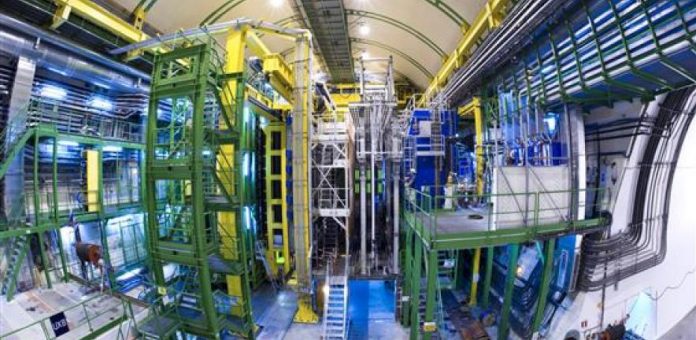In March 2020, the same experiment released evidence of particles breaking one of the core principles of the Standard Model – our best theory of particles and forces – suggesting the possible existence of new fundamental particles and forces.
Now, further measurements by physicists at Cambridge’s Cavendish Laboratory have found similar effects, boosting the case for new physics.
The Standard Model describes all the known particles that make up the universe and the forces that they interact through. It has passed every experimental test to date, and yet physicists know it must be incomplete. It does not include the force of gravity, nor can it account for how matter was produced during the Big Bang, and contains no particle that could explain the mysterious dark matter that astronomy tells us is five times more abundant than the stuff that makes up the visible world around us.
As a result, physicists have long been hunting for signs of physics beyond the Standard Model that might help us to address some of these mysteries.
One of the best ways to search for new particles and forces is to study particles known as beauty quarks. These are exotic cousins of the up and down quarks that make up the nucleus of every atom.
Beauty quarks don’t exist in large numbers in the world around as they are incredibly short-lived – surviving on average for just a trillionth of a second before transforming or decaying into other particles. However, billions of beauty quarks are produced every year by CERN’s giant particle accelerator, the Large Hadron Collider, which are recorded by a purpose-built detector called LHCb.
The way beauty quarks decay can be influenced by the existence of undiscovered forces or particles. In March, a team of physicists at LHCb released results showing evidence that beauty quarks were decaying into particles called muons less often than to their lighter cousins, electrons. This is impossible to explain in the Standard Model, which treats electrons and muons identically, apart from the fact that electrons are around 200 times lighter than muons. As a result, beauty quarks ought to decay into muons and electrons at equal rates. Instead, the physicists at LHCb found that the muon decay was only happening around 85% as often as the electron decay.
The difference between the LHCb result and the Standard Model was about three units of experimental error, or ‘3 sigma’ as it is known in particle physics. This means there is only around a one in a thousand chance of the result being caused by a statistical fluke.
Assuming the result is correct, the most likely explanation is that a new force that pulls on electrons and muons with different strengths is interfering with how these beauty quarks decay. However, to be sure if the effect is real more data is needed to reduce the experimental error. Only when a result reaches the ‘5 sigma’ threshold, when there is less than a one in a million chance of it being due to random chance, will particle physicists start to consider it a genuine discovery.
“The fact that we’ve seen the same effect as our colleagues did in March certainly boosts the chances that we might genuinely be on the brink of discovering something new,” said Dr Harry Cliff from the Cavendish Laboratory. “It’s great to shed a little more light on the puzzle.”
Today’s result examined two new beauty quark decays from the same family of decays as used in the March result. The team found the same effect – the muon decays were only happening around 70% as often as the electron decays. This time the error is larger, meaning that the deviation is around ‘2 sigma’, meaning there is just over a 2% chance of it being due to a statistical quirk of the data. While the result isn’t conclusive on its own, it does add further support to a growing pile of evidence that there are new fundamental forces waiting to be discovered.
“The excitement at the Large Hadron Collider is growing just as the upgraded LHCb detector is about to be switched on and further data collected that will provide the necessary statistics to either claim or refute a major discovery,” said Professor Val Gibson, also from the Cavendish Laboratory.















